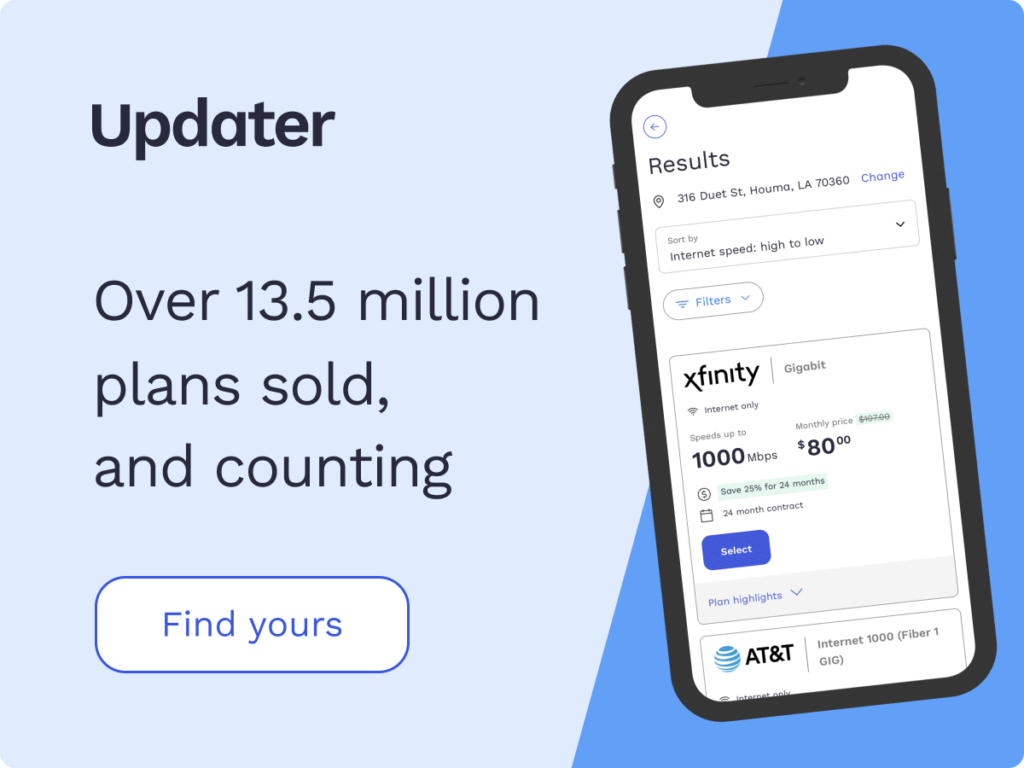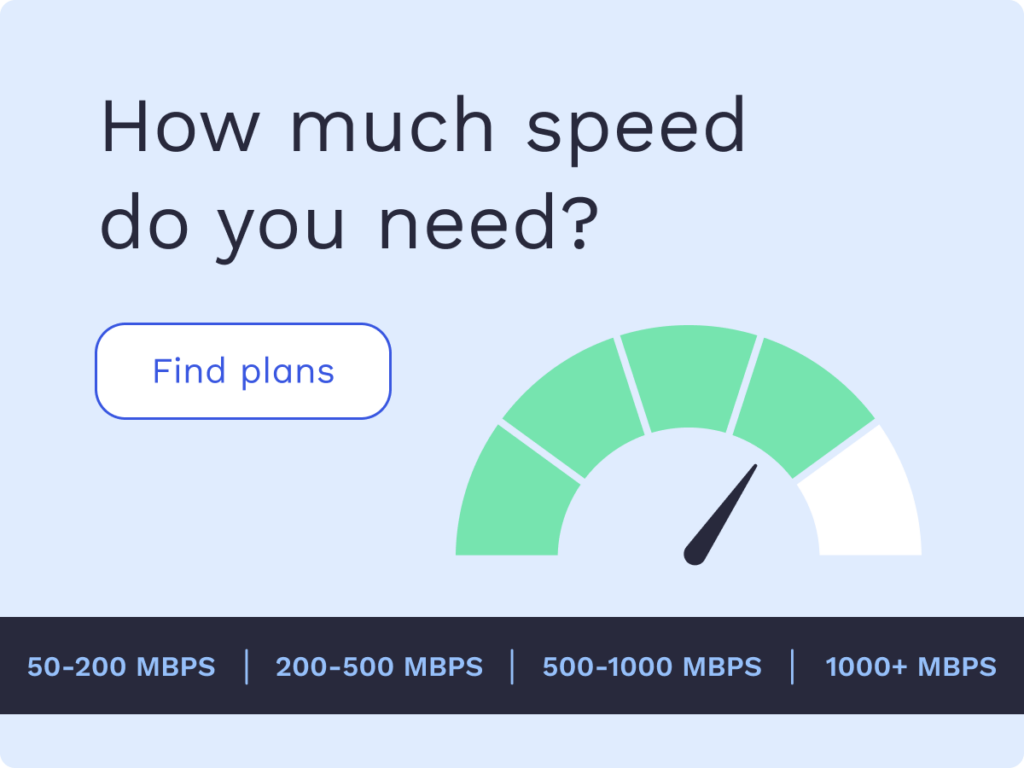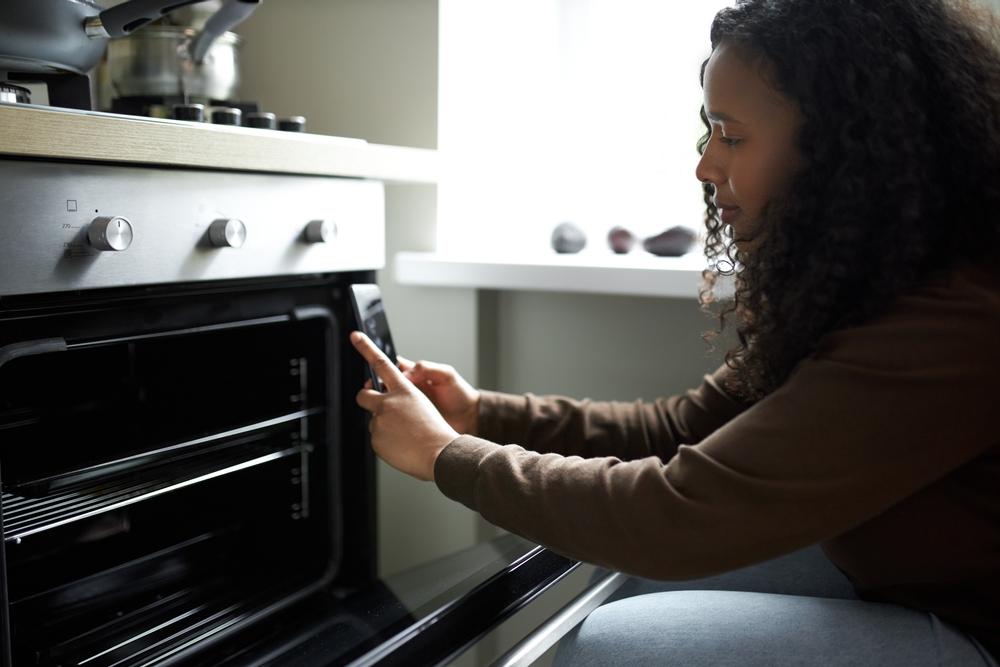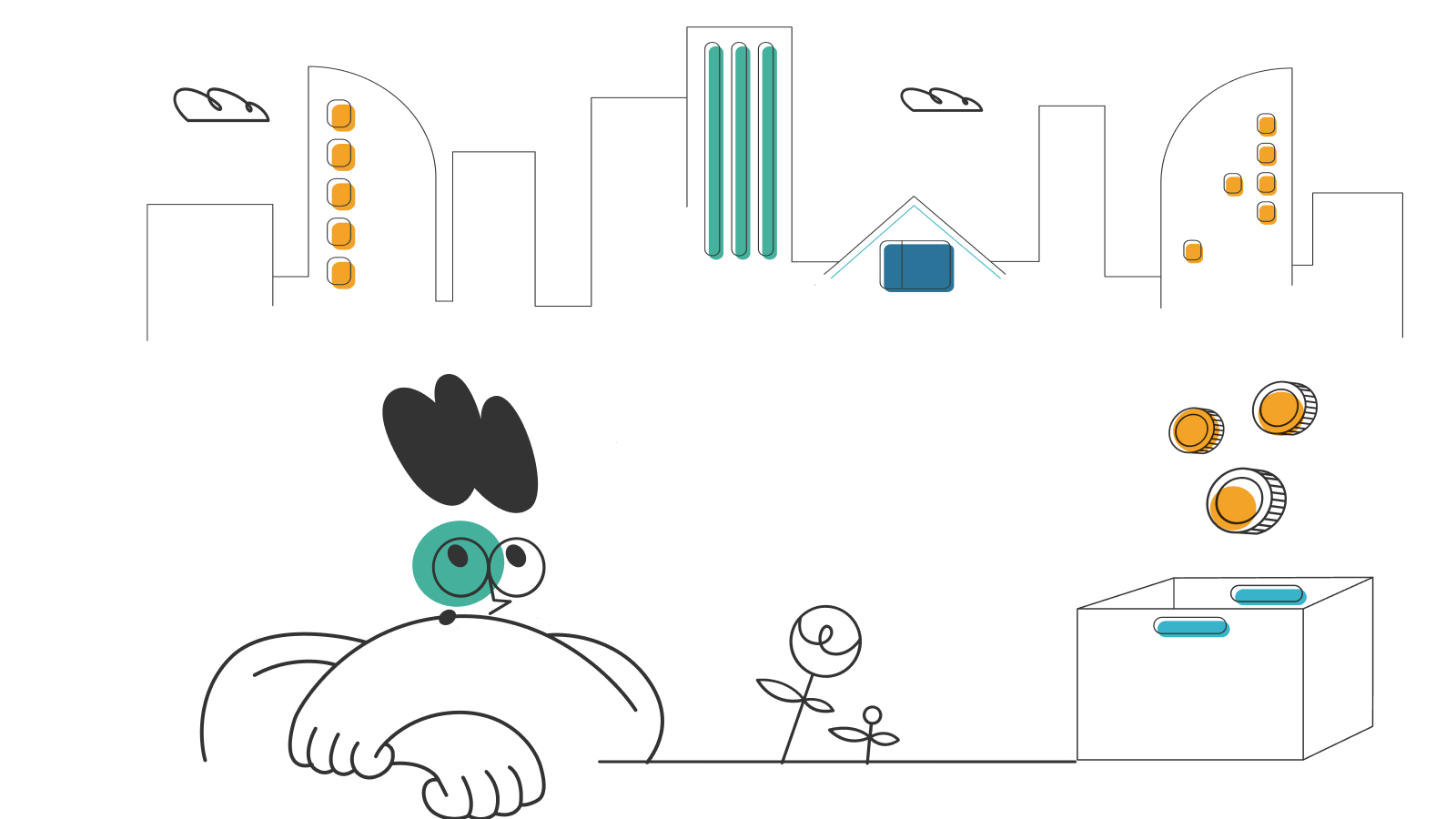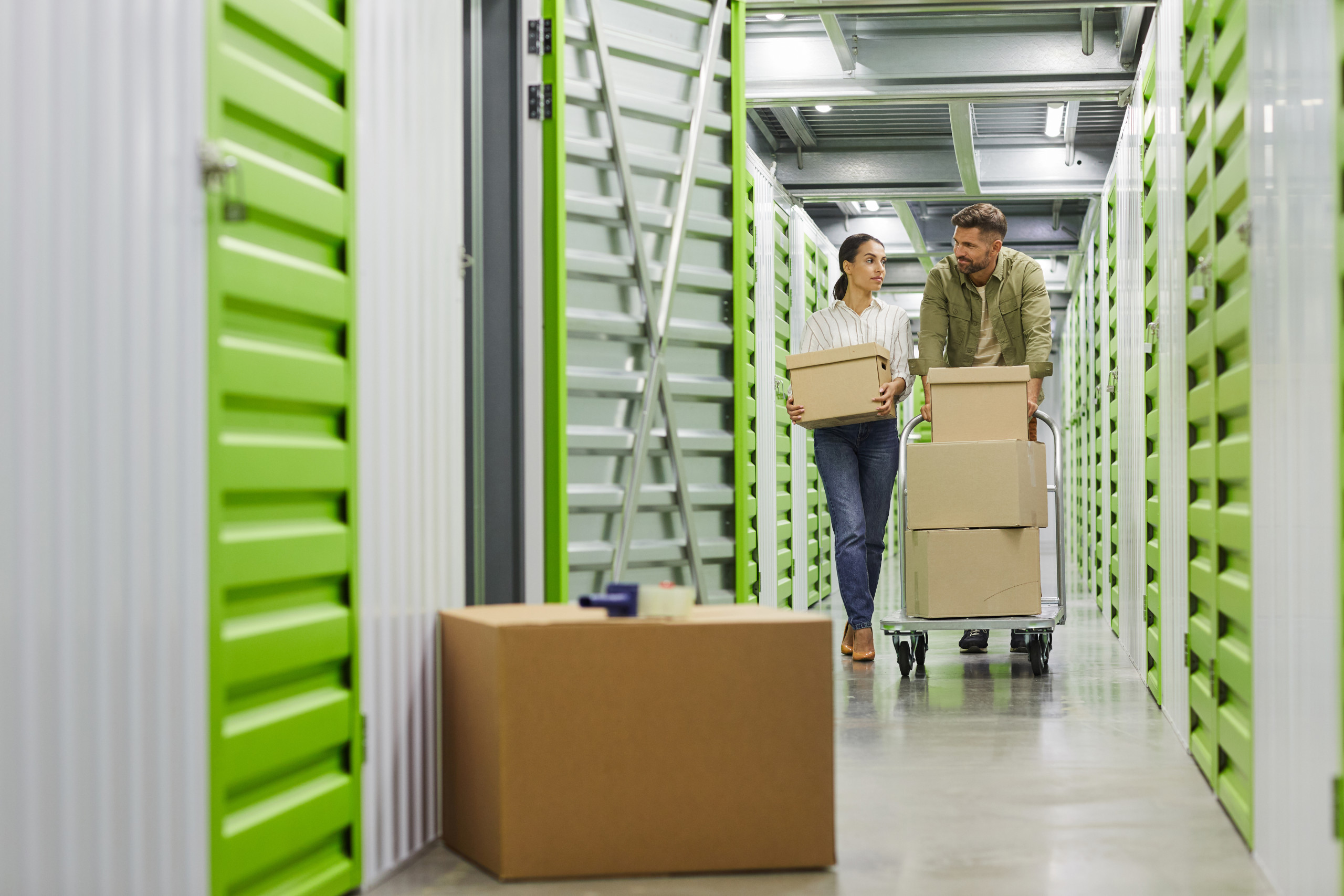Internet Speeds: Advertised vs Actual

Most internet providers usually advertise their speeds as up to a maximum figure to attract more users into their services. With such messages, most people believe they are paying for a maximum Mbps (megabits per second) connection at all times. However, you could be getting a connection that is much slower due to a number of factors.
This guide looks at why actual internet speeds vary from advertised speeds and highlights ways to determine whether you are indeed getting the internet connection speeds you are paying for.
- What is internet speed?
- What causes internet slowdowns?
- What are good download and upload speeds?
- Why is internet speed important?
- Types of internet connections and their speeds
- Tips to improve your internet speed
- Internet speed FAQs
What is internet speed?
Internet speed is the measure of how long it takes a certain amount of data to transfer from a server to your device and vice versa. When you are undertaking typical activities that require the internet, such as streaming videos on Netflix or posting on Twitter, you are using a device to download and upload data. The rate at which you transfer data is determined by your internet connection’s bandwidth measured in Mbps.
If you use a home Wi-Fi network, the internet provider determines your internet speeds. The speed of your connection largely depends on your internet provider’s technical capabilities and how much you are willing to spend for higher speeds.
What causes internet slowdowns?
According to a recent report by the Federal Communications Commission (FCC) about measuring fixed broadband speed, most people are actually getting slower broadband speeds than advertised. If you would like to view the difference between actual speed tests and advertised speeds in your area, you can visit the FCC’s broadband map and search your address.
On this map, you’ll see purple and pink dots that indicate slower than advertised broadband, while the light green dots reveal areas that match their advertised speeds. Dark green dots indicate faster speeds than advertised, which is usually harder to find.
So, why do people get slower than advertised internet speeds? There are several possible causes:
Marketing
Due to rising competition, internet service providers (ISPs) must find incentives to attract as many users as possible. This aggressive marketing forces providers to advertise the maximum speeds, although the actual speeds they deliver tend to be lower.
End-user hardware issues
End-user hardware issues could also contribute to slowdowns in broadband. For example, if you are using an older router, it may lack the capacity to keep up with modern speeds. Additionally, a poorly configured Wi-Fi connection may be slowed down by interference, making it difficult for you to realize the connection speeds you are paying for. This is not the ISPs fault, and you may be able to fix it on your own.
Oversubscription of networks
Most internet providers oversubscribe their connections. This implies that not every customer in your area will get the maximum speeds if they attempt to do use their connection at the same time. As a result, you experience a substantial slowdown during peak usage periods.
Slower connections
If your wireless or hardwired connection is slower than what your internet connection is capable of delivering, you will likely experience slow internet speeds. Usually, networks are only as fast as the slowest link in the communication path. Where your wireless access point or switch is slower than the maximum connection throughput, you are likely to experience slow internet connections.
Distance from ISP
The further you are located from your ISP’s hardware, the slower your signal becomes. This is why people in urban areas are more likely to get a faster connection than those living in rural areas.
Congestion
Usually, one internet connection line is shared among many nearby ISP customers. Where congestion is high, the signal becomes slow because so many people are competing for a single internet connection. This is particularly true if all users are using demanding bandwidth simultaneously.
Time of the day
In most cases, several people are using shared connection lines during peak hours. For residential connections, peak time is usually from 6:00 pm to midnight and you are more likely to experience slower speeds than during these times.
Throttling
The ISP could slow down or throttle speeds after experiencing some types of traffic like peer-to-peer traffic. Also, if your internet plan has a data usage limit, the ISP could slow down your connection for the remainder of the month once you hit a certain amount of data downloaded.
Server-side issues
The download speeds you get don’t depend only on the ISP’s advertised speeds. They can also be influenced by the speeds of the servers you are downloading from and the routers in between.
What are good download and upload speeds?
Good internet speeds are determined by several factors, including your specific needs and the location where the services are required. For example, a user located in a rural area may experience a limit on maximum speeds because of a lack of adequate network infrastructure built in their area. The Federal Communications Commission (FCC) provides the following guidelines on what constitutes a good broadband speed:
- Researching online: A student doing classwork on the internet would need an average of 5 to 25Mbps.
- Working from home: You need at least 40Mbps for working from home.
- Streaming: A person who streams videos would need between 1 and 10Mbps, depending on the streaming quality. Streaming HD videos will require at least an 8Mbps connection.
- Gaming: A household with gaming devices might need a minimum of 10 to 25Mbps.
- Web browsing and social media: You need anywhere from 1 to 10Mbps for web browsing and basic social media activities.
Why is internet speed important?
Internet speed is crucial because it sets the parameters for what activities you can perform online. Usually, internet providers advertise packages ranging from 1Mbps to 5000Mbps. Having fast internet enables you to undertake high-speed activities like downloading video game files without worry of lengthy load times, dropped connections, or buffering. Fast internet also allows you to multi-task on the same device or use several Wi-Fi devices simultaneously. Some specific benefits of a high-speed internet connection include:
- Fast downloads
- Quick load times
- Smoother connection on live streams and video calls
- Lower chance of dropped connections and buffering
- Better support for several users on a single Wi-Fi network
Types of internet connections and their speeds
There are several different types of internet connections and the type of internet you choose plays a crucial role in the speeds you can get. Some common types of internet include:
Fiber internet
Fiber internet is arguably the fastest internet you can get. Most fiber internet providers offer speeds up to 1000Mbps but you can now get speeds of up to 2000Mbps or 5000Mbps. Fiber is also the only internet type that delivers symmetrical upload and download speeds.
Cable internet
Cable internet leverages copper cables similar to those that transmit cable TV services. Cable internet can reach gigabit speeds, making it ideal for many users who need high-speed internet in their homes.
DSL internet
Digital subscriber line leverages similar wiring as landline phone networks. It is substantially slower than other types of internet connections, offering maximum download speeds of 100Mbps.
5G home network
5G home network is one of the newer internet types providing internet over a fixed wireless connection. 5G internet offers relatively fast speeds ranging from 100 to 1000Mbps. The technology is ideal for highly populated areas such as towns and cities. Currently, 5G networks aren’t widely available as it is still in the initial rollout stages.
4G LTE
4G LTE home internet leverages a similar technology as 5G home internet but it is delivered over 4G networks instead. It offers slower speeds that depend on the type of cell service available in your area. It is a potential option for rural areas that are typically limited to satellite internet.
Fixed wireless
Fixed wireless internet is a cellular-based internet connection. Most plans deliver between 25 and 50Mbps, making it ideal for general home use.
Satellite internet
Satellite internet is widely available in the US but this is undeniably among the slowest types of internet that you can get. Most satellite customers are located in rural areas where they can’t access other types of internet connections and typically see speeds up to 100Mbps.
Tips to improve your internet speed
Your internet can be slow for a wide variety of reasons. Your ISP may be delivering its advertised speeds but other factors may be standing in the way of you getting the best connection possible. To improve your internet speeds, you can try the following:
Upgrade your equipment
Outdated equipment can affect your internet speeds. To get the best speeds, you should invest in a modem and router that meets wireless standards for Wi-Fi 5 (802.11ac) or Wi-Fi 6 (802.11ax). If you are using a cable gigabit plan, you should have a DOCSIS 3.1 gigabit modem.
Place your router in a better location
You can often improve internet speeds by simply moving your router to a better location. Your best bet is to ensure the router is in a centralized location and away from any obstructions such as bulky furniture and large appliances.
Use an Ethernet cable
To improve speeds, you can plug your computer directly into your router using an Ethernet cable. This ensures your computer gets a more direct line to your home network. Ideally, wired connections tend to improve speeds while reducing the chances of signal interference experienced with Wi-Fi.
Regulate other users’ online activities
If you need to use the internet for a demanding activity such as a Zoom meeting, you can ask other users in your home to switch off or limit their activity to free up bandwidth. You can also leverage a router with quality of service (QoS) settings that allow you to limit specific users and activities.
Close unnecessary tabs and apps
Having too many idle tabs on your browser can impact your internet speeds. You can free up some bandwidth by closing those you are not currently using.
Upgrade your internet
If you have done all the above and nothing seems to work, it may be time to consider upgrading to a better internet plan. You may also look into switching providers if the services you are getting don’t meet your expectations and needs.
Internet speed FAQs
Is advertised speed download or upload speed?
Typically, when you are buying internet packages, the download speed is the one ISPs advertise more prominently. Download speeds carry higher importance because they support most of the activities an average user does, such as streaming videos and working from home.
What is considered fast internet speed?
Speeds that hit 200Mbps or above are currently considered fast, while speeds that clock in at or near 1000Mbps are referred to as gigabit. These speeds are offered as premium service packages and are primarily available only in specific areas where ISPs have networks designed to sustain such speeds.
How do I measure my current internet speed?
There are several online tools to help you find your current internet speed, ping times, and other crucial statistics for making a more informed purchase decision. Some of these tools are:
- Internet Health Test
- Ookla Speedtest
- Fast.com
- Minim App
- SpeedSmart
- AT&T High-Speed Internet Test
What should I do if I’m experiencing slower speeds than advertised?
There are many reasons why you may experience slower-than-anticipated internet speeds. Your ISP may be responsible for some of the factors, while others are within your control.
One of the first things to do if you suspect that your internet speeds are slower than what your ISP advertises is to perform an internet speed test using the tools listed above. However, you may need to conduct more than one test—across varied days of the week and different times of the day to get the most accurate results.
Once you have confirmation that your actual internet speed is slower than what is advertised you can take action. This can involve simple steps, such as moving your router to a better location or purchasing new equipment. If you try some easy fixes but the problem still persists, contacting your ISP is a smart next step. Your ISP may be able to troubleshoot or help you adjust your plan to help you get the speed you need.
*Pricing varies by location and availability. Speeds may vary. All prices subject to change; for current pricing and availability visit our internet service page. Prices as of 3/25/22.
Disclosure | Updater articles are based on our own data and research, independent from partner relationships. We are not compensated by partners for information and opinions presented here. Our Editorial Terms of Service can be found here.

